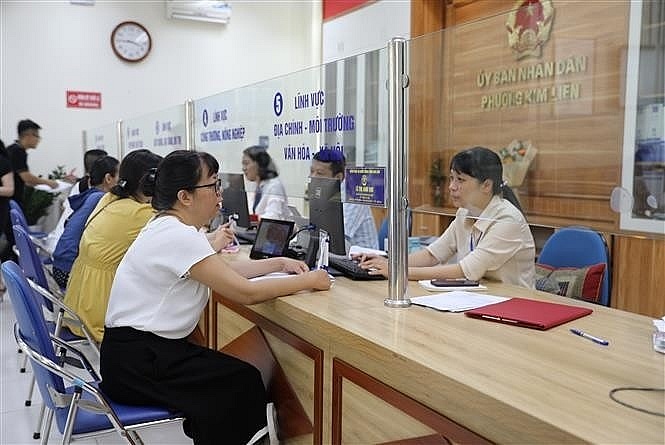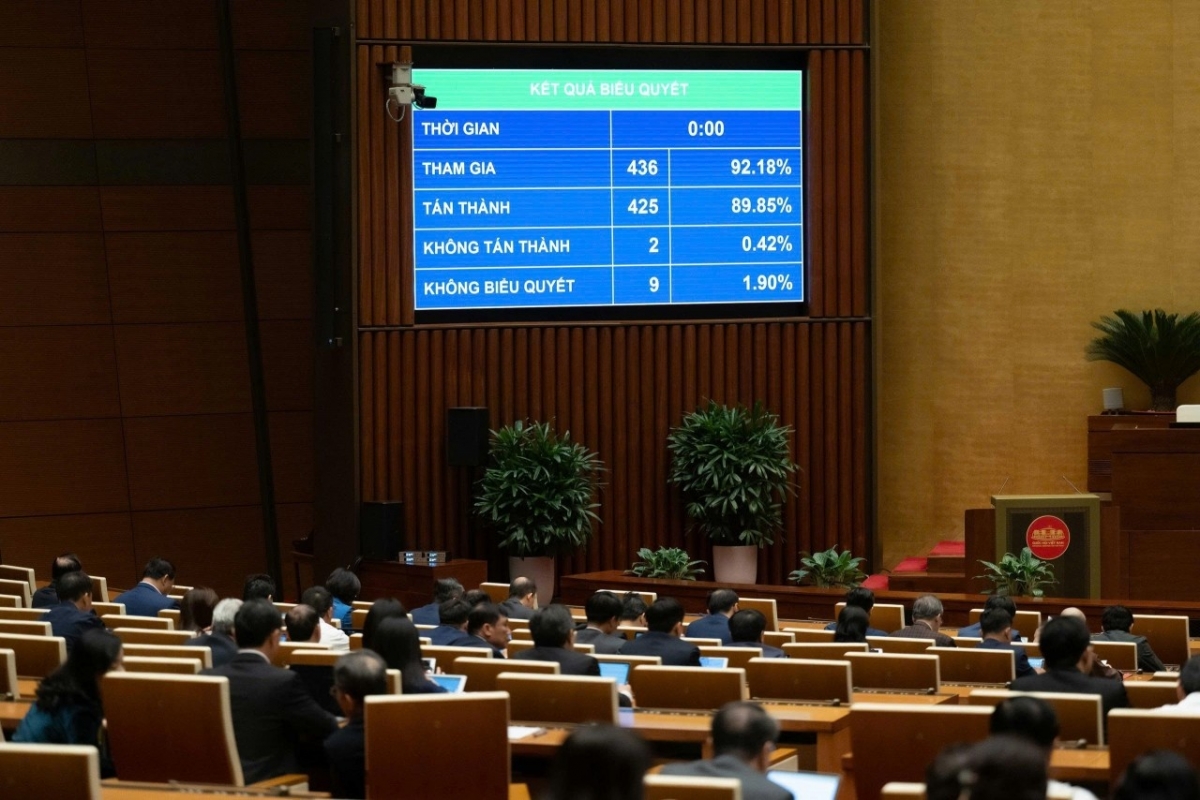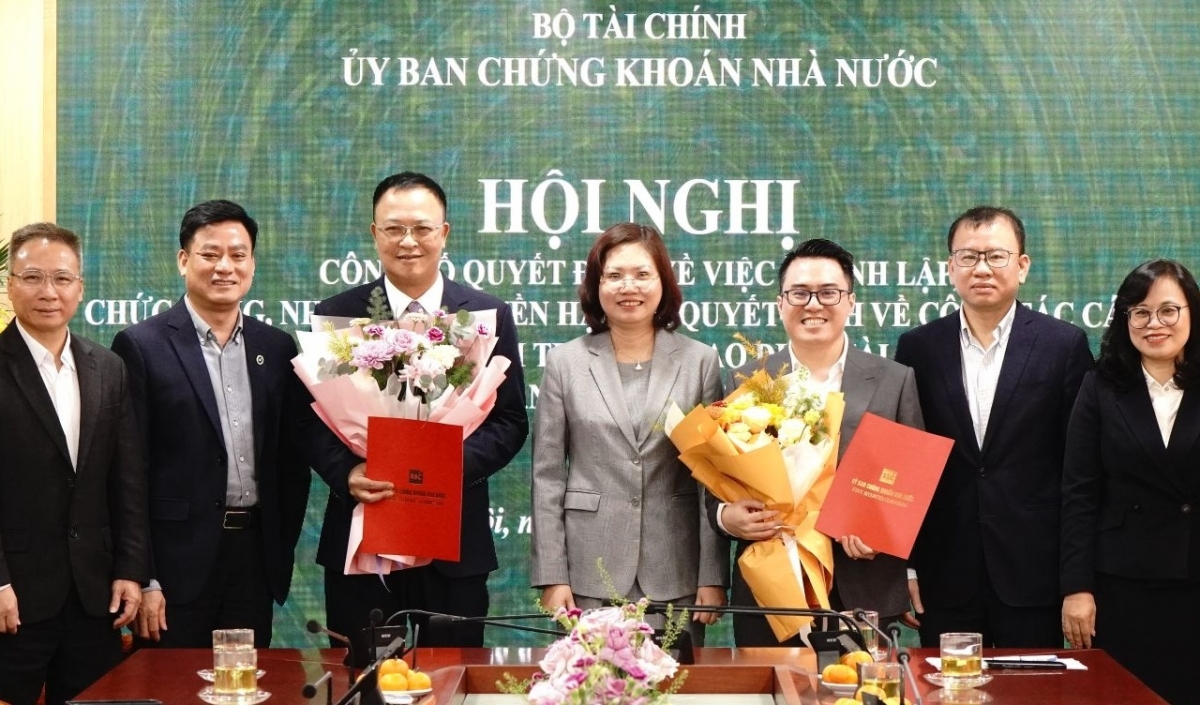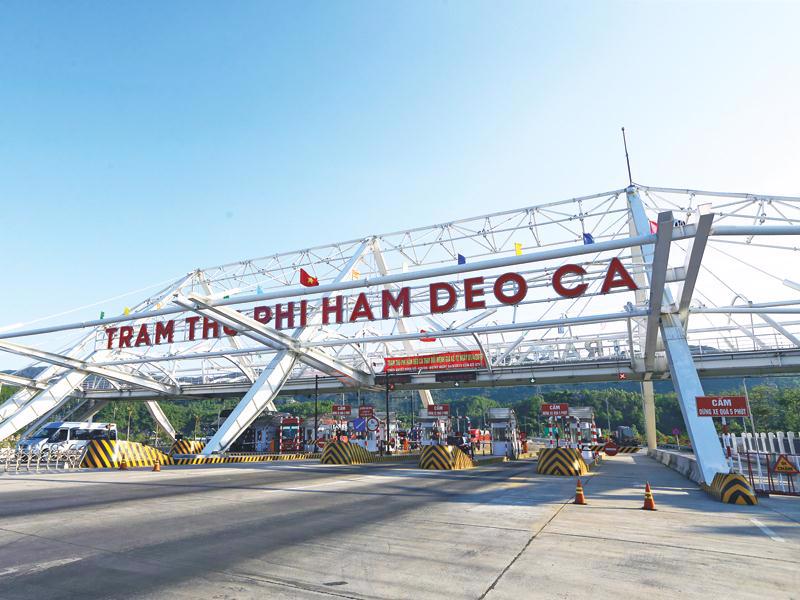INTERNATIONAL INVESTMENT
AND PORTAL
Last week, the new two-tier local government apparatus was launched nationwide, designed to simplify the administrative structure, abolish the intermediary district level, and bring government closer to the people.
Under the restructuring, the number of provinces and centrally run cities is pared down from 63 to 34, and the number of communes will fall from more than 10,000 to just over 3,300.
To enable the transition, a broad legislative reform process has been implemented, including amendments to the Constitution, the Law on Organisation of Local Governments, and the Law on Organisation of the Government. In addition, 40 decrees have been enacted, including 28 focused specifically on the decentralisation and delegation of power.
The reform is part of a broader vision to establish larger and integrated economic regions by linking their strengths. Most of the newly merged provinces will have populations of over 2-3 million and diverse economies encompassing mountainous, lowland, and coastal areas.
In Ho Chi Minh City last week, Party General Secretary To Lam said, “Rearranging the country is a move of strategic significance. It marks a new development period of our cause in perfecting the state administrative apparatus, institutions, and the political system, towards perfecting a modern and creative administrative management system that benefits all.”
He added that the reorganisation and operation of a new local government model are objective and inevitable requirements of the cause of national development in the context of globalisation, digital transformation, and the fourth industrial revolution. “This is a valuable opportunity for us to innovate leadership thinking, innovate state management methods, vehemently apply science and technology, improve the quality of national governance, and increase the effectiveness of serving the people,” General Secretary Lam said.
Positive impacts
According to the Australian Chamber of Commerce in Vietnam (AusCham), the comprehensive restructuring plan will have impacts on Vietnam’s coastal and maritime landscape.
Post-merger, Vietnam will have 21 coastal provinces, all equipped with seaports, increasing the proportion of coastal provinces from 44 to 62 per cent.
“The reform is set to enhance Vietnam’s logistics competitiveness, creating mega-port clusters. For example, there will be a greater Ho Chi Minh City: merging the city and the neighbouring provinces of Binh Duong and Ba Ria-Vung Tau will form a port system with 99 seaports, surpassing the current leader, Haiphong,” AusCham said. “There will also be a greater Can Tho city. Integration with Soc Trang and Hau Giang provinces will give inland Can Tho direct access to the coast, strengthening the Mekong Delta’s maritime economy.”
These changes will make seaport infrastructure more accessible across the country, providing new growth opportunities in logistics, transport, and trade.
AusCham also said the restructuring promises improved administrative processes and larger, more capable provincial units - favourable conditions for foreign investors. “However, during the transition, businesses may encounter evolving regulatory landscapes and realignment of local authorities,” it stated.
Nikkei Asia also last week reported on Vietnam’s cut of provinces by half through the radical administrative restructure.
It cited Andrew Wood, primary Vietnam analyst at S&P Global, speaking at a conference last month that upon completion, the reform could lead to better allocation of fiscal resources, especially where current expenditures is redirected to more productive categories.
“This means that the government’s spending will be directed towards areas where it will have the greatest positive impact on the economy and society. It implies a move away from wasteful spending and towards strategic investments that promote growth, development, and social wellbeing,” Wood said.
Japan consulting firm B&Company also said, “Vietnam’s efforts to restructure its provincial administrative units and pilot a two-tier local governance system mark a significant shift toward a more modern, efficient, and decentralized public administration model. These changes are expected to enhance service delivery, improve investment conditions, and better align local development with national priorities.”
According to B&Company, the consolidation of provincial- and commune-level administrative units helps eliminate overlapping responsibilities and reduce bureaucratic redundancy.
“This restructuring fosters more transparent reporting lines and enables more responsive and efficient governance. Importantly, the merging of administrative units leads to the creation of larger and more viable economic zones, enhancing their appeal to infrastructure and industrial investment,” the firm said. “Aligning provinces with similar economic strengths also allows for better coordination in regional development strategies, helping to amplify competitive advantages and growth potential across regions.”
Reaching high and far
The new model is also to help the country to materialise its aspiration of becoming a prosperous nation by 2045. Now a middle-income country, Vietnam has set ambitious growth targets, aiming for 8 per cent GDP growth this year and double-digit annual growth over the following five years. The 13th National Party Congress set a bold objective for the country to become a high-income developed one by 2045.
GDP in Q1 this year increased 6.93 per cent – far higher than the on-year rates of the 2020 -2024 period. The three key economic sectors witnessed positive growth, involving agriculture at 3.74 per cent, industry and construction at 7.42 per cent, and services at 7.7 per cent.
“Vietnam’s economy still maintains macroeconomic and social stability in the context of complicated geopolitical and economic fluctuations. However, difficulties can also continue to create new advantages for attracting investment and promoting production and business activities,” stated Prime Minister Pham Minh Chinh in a telegram to ministries and localities. “In particular, comprehensive institutional reforms and public investment are expected to bring about profound and effective impacts on economic growth in 2025.”
The International Monetary Fund forecasts that Vietnam’s economy will reach $506 billion in 2025, ranking 33rd globally. According to the World Bank, Vietnam’s GDP growth will be 6.8 per cent in 2025 and 6.5 per cent in 2026, making Vietnam one of the fastest growing economies in the East Asia-Pacific region.
Meanwhile, Standard Chartered Bank forecasts Vietnam’s GDP growth to reach 6.7 per cent this year, with an on-year increase of 7.5 and 6.1 per cent, respectively, in the first and second half of the year.
Figures from the Ministry of Finance’s Foreign Investment Agency showed that last year that total newly registered capital, additional capital adjustments, and foreign investors’ capital contributions and share purchases were estimated at $38.23 billion, slightly down 3 per cent on-year. The total disbursed sum was $25.35 billion, up 9.4 per cent on-year, marking the highest disbursement level ever recorded.
In the first five months of this year, the respective figures were estimated to have come in at nearly $18.39 billion and $8.9 billion, up 51.2 and 7.9 per cent on-year.
 Officials at Kim Lien ward Public Service Centre receive and process administrative procedures for people. (Photo: VNA)
Officials at Kim Lien ward Public Service Centre receive and process administrative procedures for people. (Photo: VNA)
Nguyen Huu Thong, member, Judicial Committee National Assembly

The reality of the past 50 years has shown that the separation of administrative units has contributed to achieving the goals of political stability and local governance in each period. However, to date, this decentralised organisational model has revealed many shortcomings.
Numerous provinces are small in scale, with low populations that do not meet area standards, leading to fragmented development and difficulties in forming key economic zones. It has also resulted in scattered investment, and low efficiency.
In many areas, the administrative apparatus remains cumbersome, with recurrent expenditures accounting for 70 per cent of total budget spending, thereby limiting investment resources for development. Therefore, I believe that the policy of rearranging provinces and centrally governed cities is a major, strategic, and inevitable decision aimed at improving the effectiveness and efficiency of governance and management.
Reorganising development space towards expansion, cohesion, and sustainability offers a valuable opportunity to comprehensively restructure the regional development model. This includes the redistribution of population, infrastructure, and investment resources in line with new strategic directions.
For example, the merger of Binh Duong and Ba Ria-Vung Tau into Ho Chi Minh City will create significant economic potential, comparable to Shanghai. Similarly, merging Lam Dong, Dak Nong, and Binh Thuan would result in a larger administrative and economic entity, covering 24,232 sq.km - the largest in the country, with a population of nearly four million people and a regional GDP of nearly $13 billion, ranking seventh nationwide.
Dang Trong Duc, CEO, KTG Industrial

The recent announcement of provincial mergers in Vietnam is a positive and strategic move that reflects the government’s commitment to administrative reform and long-term economic planning. We view this consolidation as a potential catalyst for improved governance, streamlined procedures, and a more investor-friendly environment, aligned with the broader vision for the country.
While the full impact of this merger is yet to come, the creation of larger, more cohesive administrative units can reduce bureaucratic complexity, enhance government planning and operations, and improve the application of laws and regulations. This is a welcome change for industrial developers and manufacturers alike.
However, complementary efforts are essential to unlock the benefits of these reforms fully. Sustainable growth of Vietnam’s industrial real estate and manufacturing sector will also require a robust infrastructure, a skilled and abundant workforce, streamlining work permit and visa processes for expatriate professionals, and continued participation in progressive trade agreements.
Tran Hoang Ngan, National Assembly deputy Ho Chi Minh City

The new two-tier local government apparatus will help reduce the burden of budgetary costs, and more importantly, we will gain greater momentum for development and expanded development space. In my view, the combination and merger of provinces and cities is not merely the addition of population or land area, but rather the multiplication of GDP.
Take Ho Chi Minh City as an example: the merger of three localities - the industrial hub of Binh Duong province, the maritime economic and logistics centre of Ba Ria-Vung Tau province, and the financial, commercial, and sci-tech centre of Ho Chi Minh City - would form a golden triangle for the entire country.
The new Ho Chi Minh City currently will continue to contribute around one-quarter of national GDP and one-third of total state budget revenue, with even greater contributions expected in the future.
Furthermore, we will see the emergence of new dynamic quadrilateral zones with significant potential. For instance, the international transshipment port of Cai Mep-Thi Vai, combined with the planned international port in Can Gio, could form a free trade zone integrated with the international financial centre in Ho Chi Minh City. In addition, Long Thanh International Airport in Dong Nai province would act as a powerful new growth driver for the southeast region.
However, in order to realise these goals, it is essential to ensure investment in an institutional framework that is robust and also flexible - tailored to the specific characteristics of each locality in terms of population size, economy, security, and defence.
Nguyen Thi Thu Ha, National Assembly deputy Quang Ninh province

The provinces formed after the merger will be larger in scale, with more diverse natural conditions and resources. They will be capable of formulating broader socioeconomic development plans, attracting stronger investment, and reorganising production and service spaces in a more rational and sustainable manner.
The reorganisation of administrative units will also create better conditions for restructuring administrative agencies at all levels, thereby improving governance efficiency and the quality of services provided to citizens and businesses. This is also an opportunity to advance institutional reform by perfecting the model of a streamlined, modern, transparent, and professional local government.
However, the implementation process will face problems, requiring strong leadership, coordination, and appropriate policies.
One immediate issue is the management of surplus administrative headquarters. According to a governmental report, the total number of public headquarters at the provincial level in the 52 provinces and cities affected by the reorganisation is over 38,100, of which more than 4,200 are expected to become redundant.
The handling of these surplus facilities must be clearly regulated in terms of authority, plans for reuse, conversion of function, or disposal through public auction, in order to prevent waste or abandonment.
The government should promptly issue comprehensive and specific guidance documents on organising the management of public assets, transferring and assigning personnel for utilisation, and arranging public housing accordingly.
Dang Huynh Uc My, chairwoman, Board of Directors Thanh Thanh Cong-Bien Hoa JSC

As a company operating in high-tech agriculture, AgriS follows administrative reform policies and regional development planning. The merger of cities and provinces is a strategic move by the government to streamline the administrative apparatus, optimise costs, and improve governance efficiency.
This creates an opportunity for multi-location production models like ours to strengthen regional connectivity, expand raw material areas, and optimise logistics and operational manpower.
We hope that the post-merger investment environment will be improved towards greater policy consistency, simplified procedures, and more effective access to development support programmes, particularly in green credit, digital transformation, and logistics.
With a circular agricultural value chain model and a production network spread across multiple provinces, we place special emphasis on the alignment of planning and mechanisms among localities. Such consistency reduces compliance costs and shortens project implementation timelines, and also motivates long-term investment expansion, especially in priority areas such as green growth, circularity, and digitalisation.
Leveraging our integrated capabilities in agtech, foodtech, and more, we are ready to work alongside local governments to connect businesses, farmers, financial institutions, logistics providers, and research units into a modern, efficient, and sustainable agricultural ecosystem. We also stand prepared to serve as a regional partner to provincial authorities in promoting green, smart, and circular agricultural initiatives, contributing to sustainable development that leverages each locality’s unique advantages.
We are committed to accompanying the government and localities throughout this transition, with the firm belief that reform is the foundation for a favourable, efficient, and sustainable investment environment.



















